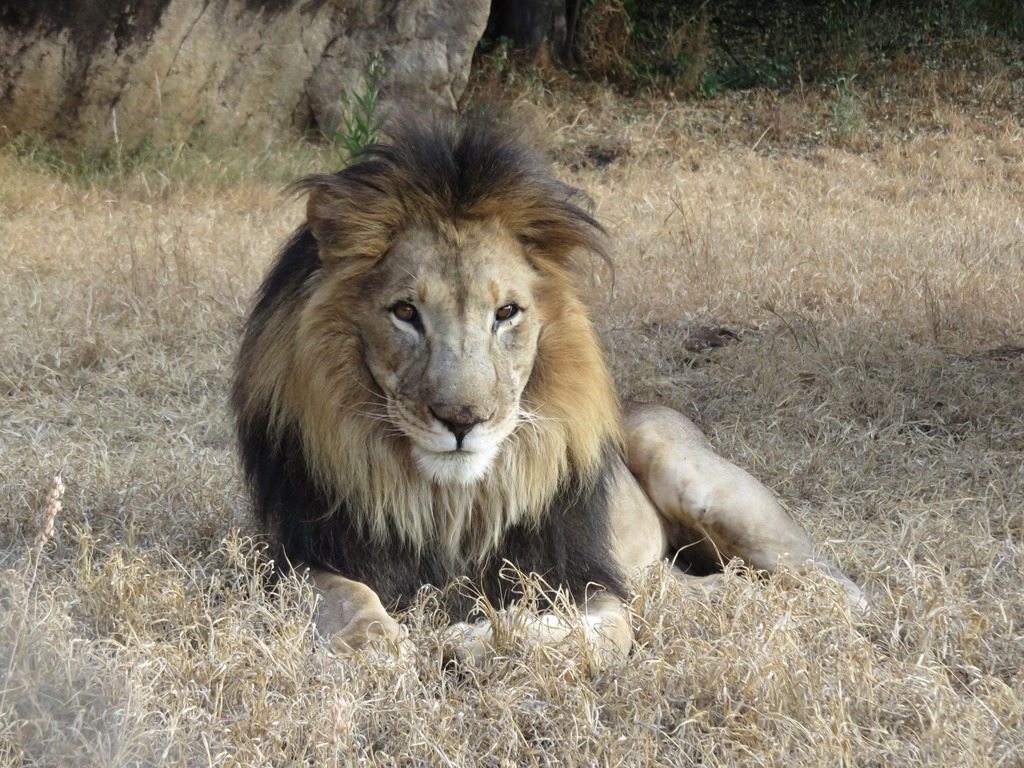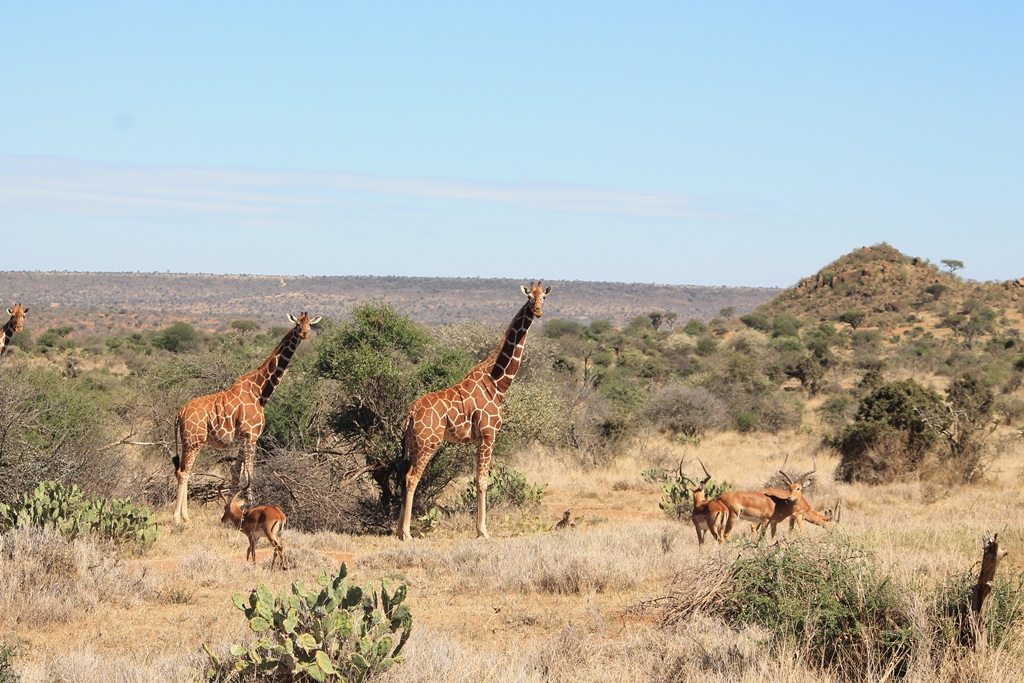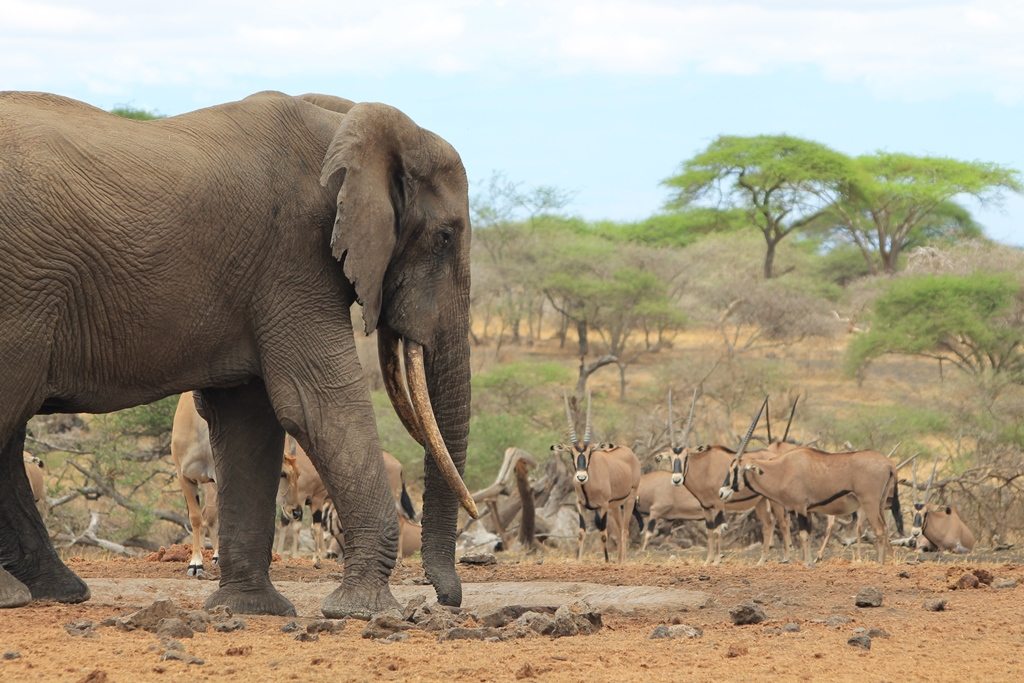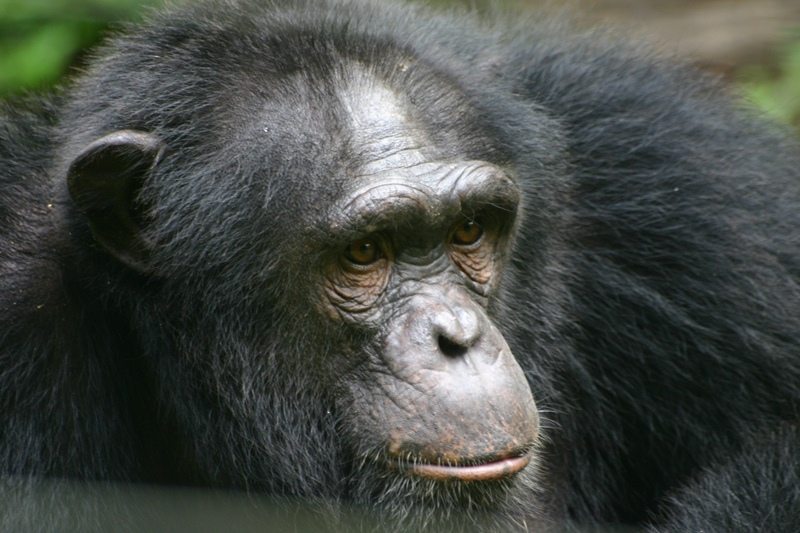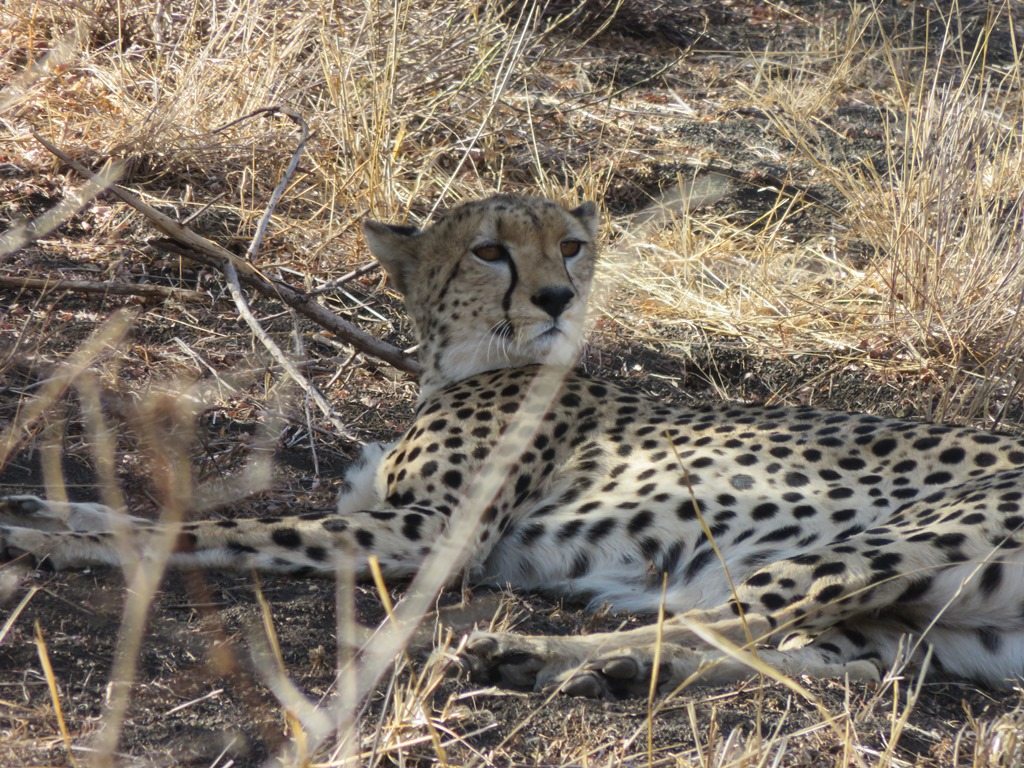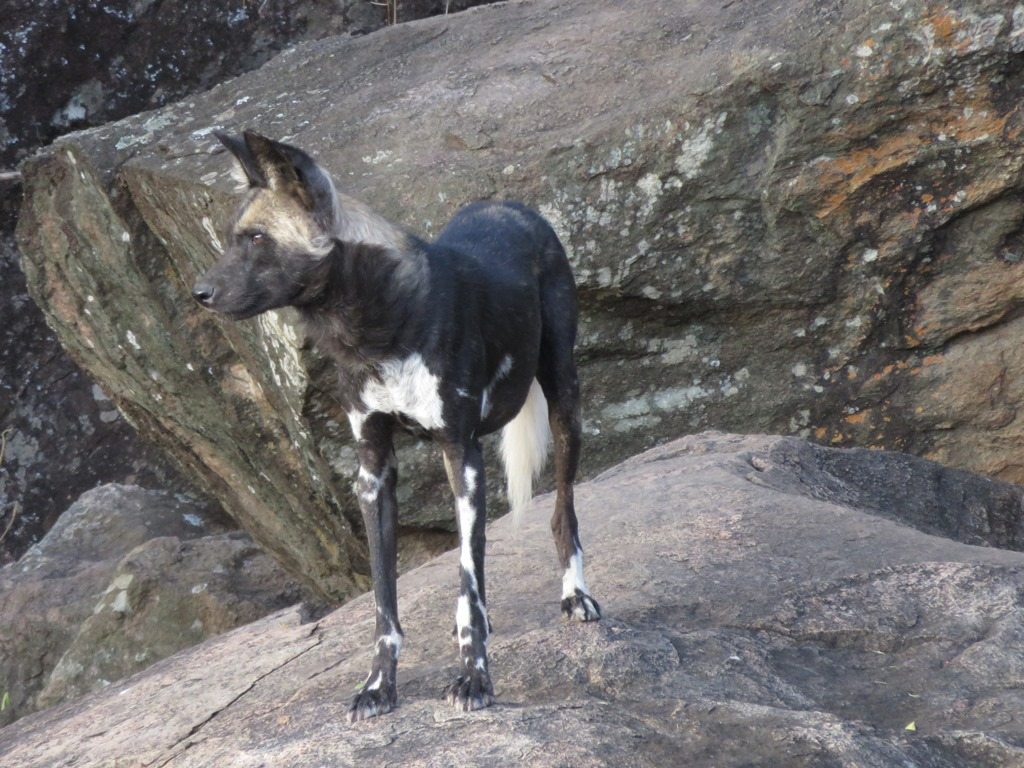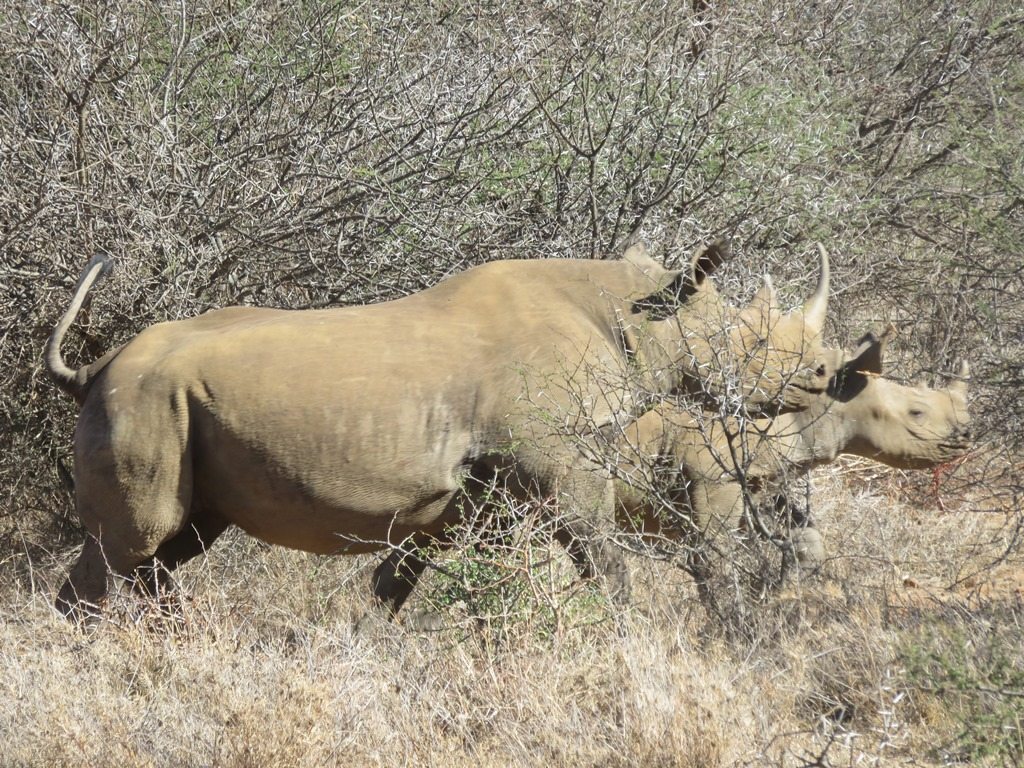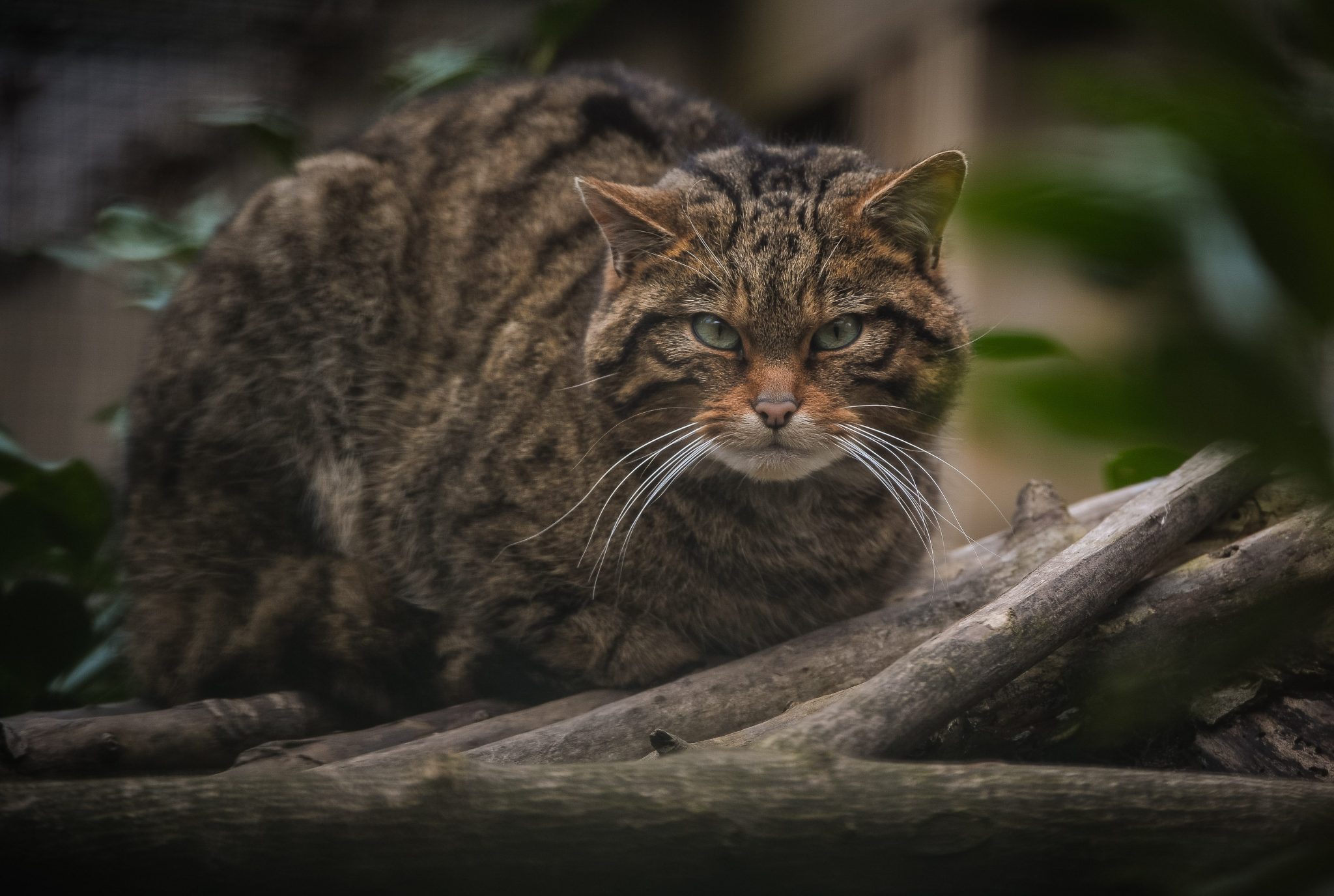Tag: Championing ecological research
There are even fewer places that can boast the enormous amount of biodiversity found on the continent. Africa is home to one quarter of the world’s mammal species, one fifth of the world’s bird species and supports over 950 species of amphibians. The African mainland also harbours between 40,000 to 60,000 species of plants!
It’s also home to many of the world’s most well-known and endangered species, like black rhinos, elephants, lions, painted dogs, gorillas, crowned cranes, chimpanzees, giraffe, okapi, cheetah and bongo, to name but a few!
On top of this impressive list of species, Africa is also of huge global important for climate regulation, harbouring the second largest rainforest in the world; the Congo.
Sadly, African biodiversity and its beautiful wilderness are under immense threat. High levels of poverty, a rapidly growing human population and an economy based primarily on natural resource exploitation are having devastating effect on biodiversity across the entire continent, destroying habitats for logging, mining and agriculture, targeting wildlife for bushmeat and the illegal global trade in live wildlife and body parts such as ivory and rhino horn.
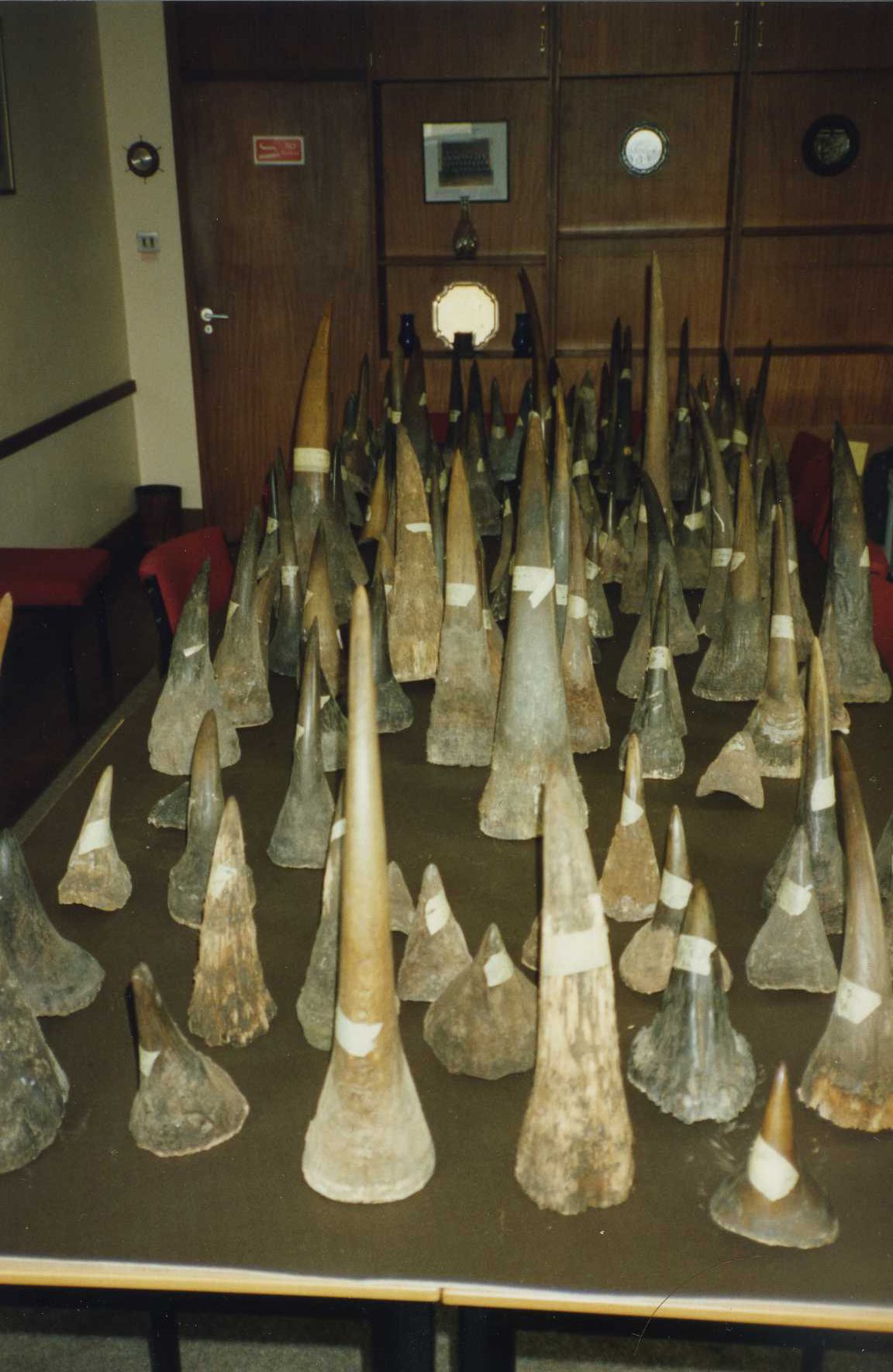
That’s why Africa is one of our main conservation priorities and why we’ve been supporting conservation efforts in Africa for three decades. Today we’re involved in conservation efforts across the continent from the rainforests of Nigeria and the Congo to the savannahs of Uganda, Kenya and Tanzania.
The wide variety of the skills and experiences of our staff have played a vital role in our conservation work across Africa. Including carrying out pioneering research and surveys of endangered wildlife, supporting protected areas and key habitats, engaging local communities in conservation and provide specialist vet advice for confiscated wildlife.
The past 12 months alone have seen our staff carry out surveys of chimpanzees in Nigeria, radio collaring Rothschild’s giraffe in northern Uganda to track their movements, developed pioneering education programmes to support black rhino and painted dog conservation in Tanzania and Kenya and help formulate action plans for okapi and critically endangered eastern gorillas in the Democratic Republic of Congo. Keep an eye on our blog for more updates from these projects.
We’ve been working in Gashaka Gumti National Park since 1994, carrying out vital research, monitoring and supporting the protection of the park and the species living within it. This year we started a project to carry out the first in-depth surveys of the Nigerian Cameroon chimpanzee (also known as Elliot’s). The aim is find out how many chimpanzees are left in the park, identify the threats to their survival and develop measure to ensure their protection in the long term. We’ll be working together with our national partners, the Nigerian Park Service, to do this.
Alongside this, in 2016 we’ve also started a new camera trap study on a number of secretive species; including the little known golden cat, Africa’s least known cat species. So far our study has managed to get pictures of several individual golden cats and is helping us understand the size of their territories and which habitats and prey they prefer.
This same study has also captured the first ever image and record of the very rare, and so far unstudied giant pangolin, one of the most threatened and trafficked animals in the world. Remarkably this incredible species was unknown in the country and park until this year! We have also constructed and plan to carry out more research on these elusive species in 2017 and beyond.
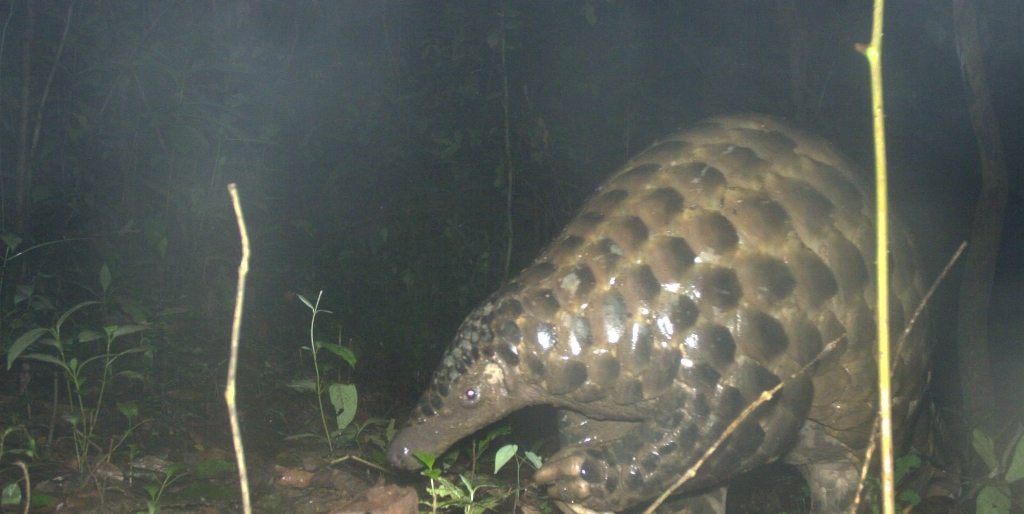
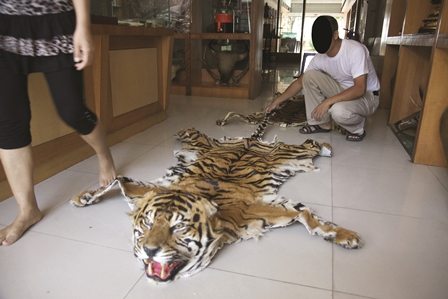
The species is endemic to the island of Java and is currently listed as endangered by the International Union for Conservation of Nature (IUCN). The species isn’t protected by Indonesian law and, sadly, its population is believed to have decreased by 50% in just over 20 years (from 1982 to 2004). It’s unclear how many still exist today and exactly where they are on the island.
As their natural habitat declines, pigs are venturing out of forests in the search for food; wandering into agricultural fields and destroying people’s crops. This has resulted in local people hunting the pigs in order to protect their produce.
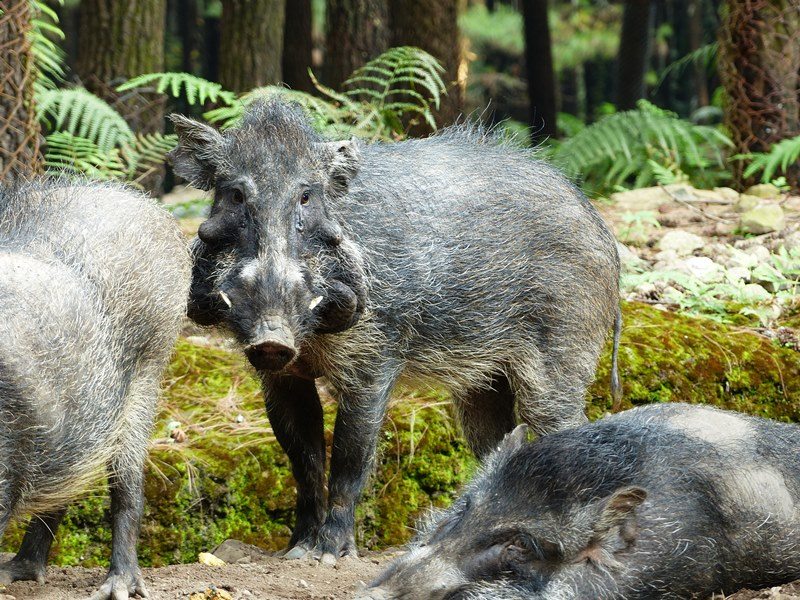
Jenny Brownlie, currently in her third year of studying a masters degree in social anthropology and development, had the amazing opportunity to join our Indonesian field researcher, Shafia Zahra, in Java to support her with some of the initial research for the project.
Jenny supported Shafia on the first of five planned camera trap surveys which aim to find evidence of the last remaining wild population of Javan warty pig. Jenny tells us more about her field trip:
“As a social anthropology student, my own academic life is focused on people and the lives they lead. However, to interact with a culture so different to my own, even if through animals, was not something to be turned down!
“Having never done fieldwork before in the UK, jumping straight into fieldwork in Indonesia seemed slightly insane to anyone I spoke to. As it got closer to the departure date I began to agree with them. Being of Scottish origin, the thought of five weeks in hot humid Indonesia created two overriding emotions; unbelievable excitement to be in a country so different to my own and the fear of the unknown.
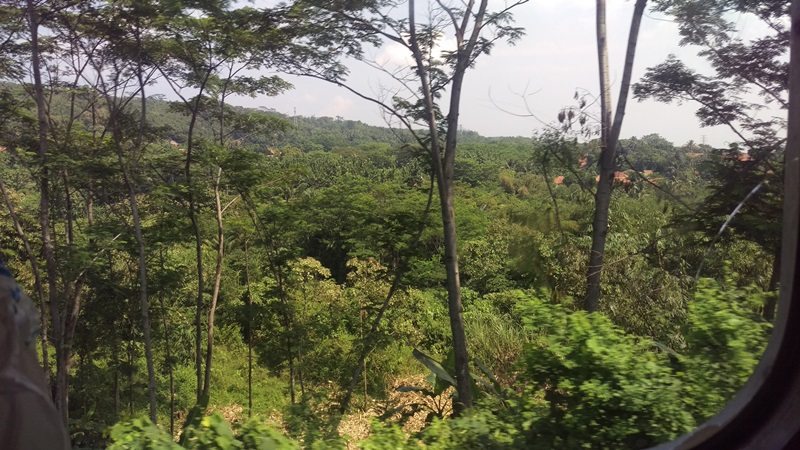
“Although having visited Java on a Scout trip, it was going to be a different experience this time round. Being by myself, rather than surrounded by 30 other Scottish Scouts, wandering my way through customs and baggage claim took less than a quarter of the time. Walking out was exactly the same, leaving an area of air conditioning to the mid-afternoon sun of Jakarta is not something any Scottish person can prepare for. After months of planning and emails sent; I was actually here and ready to begin this new adventure.
“Two days later, the real fun was about to start, kicking off with nine hours on a train. Travelling past the rice paddy fields, villages and occasionally through larger towns was extraordinary. Throughout the journey I think we passed fields at each stage of rice production.
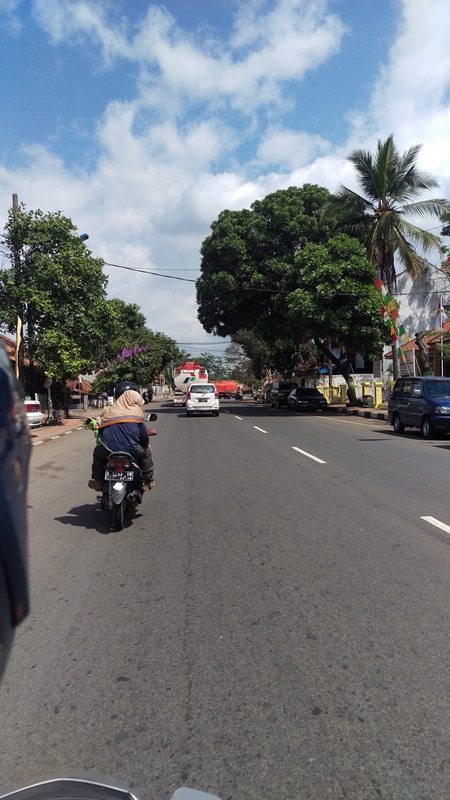
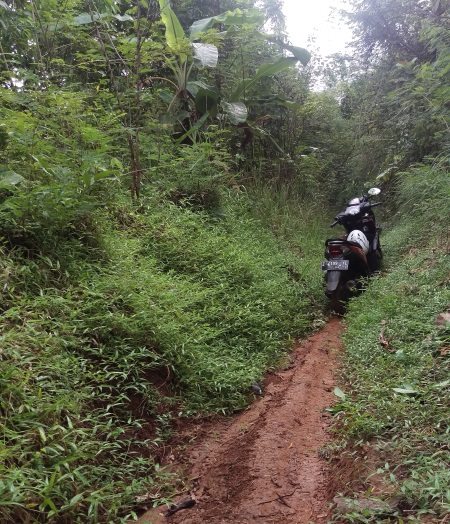
“We arrived in Banjar at what looked like a small village station. Following Shafia towards some of the bike driven rickshaws ready and waiting at the station, our kit was loaded up and we headed for the hunter’s lodge. Pulling up outside the lodge I was surprised. I had no clue what to expect of the house itself but the location of it surprised me. Fully expecting to be living in the middle of the jungle with very limited people about I got a bit of a shock when we pulled up outside a house with others squeezed in all around it. For me it looked very similar to the cul-de-sacs that we have in the UK.
“Leaving the village for the rainforest was a mix of emotions. We headed out on scooters to start setting up camera traps. By the time we came to the fifth camera we were forced to leave the scooters beside a small hut and head to the edge of the forest on foot. The hill in front of us was terrifying. The steepness was one thing but the fact the soil was loose and seemed to crumble underfoot did not build much confidence for this being a quick drop off. Watching the hunters climb up the hill with enviable ease I was dead set against falling or sliding back down. I may not be able to climb and walk at the speed that they can in the jungle, but heck was I falling in front of them.
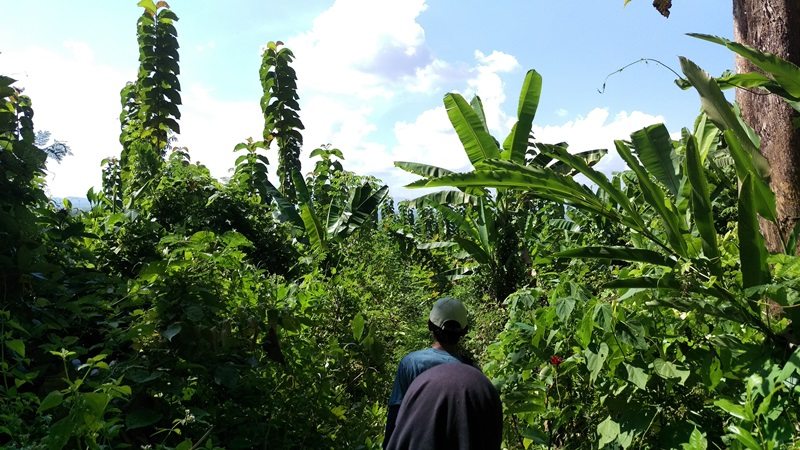
“By far one of the weirdest feelings was during the observation treks. Each week we went on a trek at a different time of the day. For the first week we went out 5pm – 8pm, the second week we went back out and did the same treks but from 9pm – 12am, then for the third we did the treks again but 3am – 6am. Being in the forest at 11pm at night when it is pitch black is bizarre. Yet you didn’t need it to be 11pm for it to be complete darkness. About half an hour after the sun sets at 6pm, it is total darkness. The prolonged but beautiful sunsets that we are used to in the UK aren’t really something that you see in Indonesia.
“For roughly 20 minutes the sky turns that recognisable red-orange but as soon as it arrives, it’s gone. The first night we were there was unimaginable. With a clear sky, the stars were incredible to look at. For the duration of our break half way through the trek, I don’t think I looked away once. My only complaint was the relationship between the sky and my camera. To be able to bring home a view like that and show others was something that I desired so much, yet all six pictures that I attempted did it absolutely no justice in the slightest.
“If anyone ever has any thoughts about visiting Indonesia, real Indonesia, not the bright lights alcohol filled tourist areas; I could not encourage it enough. Even if to only see a country so different from our own you will come away with an experience that will not be forgotten in a hurry. And thanks to Chester Zoo for allowing me to accompany this research.”
We can’t wait to see whether the camera traps find any results! We’ll be sure to keep you posted with any updates from the project, so keep an eye on our blog for more information.
Coming face to face with the world’s largest reptilian isn’t everyone’s cup of tea, but Luke Evans has been studying this species for a number of years as part of his PhD and has managed to get pretty close to understand more about these incredible animals. Discover more about this crocodile project, supported by Chester Zoo, below:
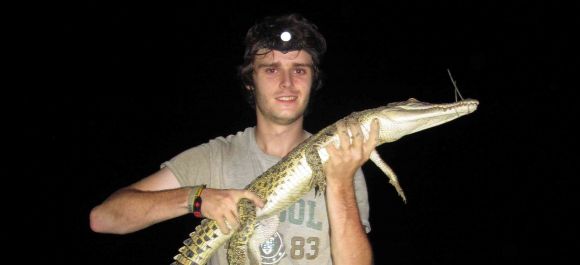
Saltwater, or estuarine, crocodiles can be found in rivers and swamps but with the increase in palm oil plantations, and other changes to the environment, their habitat has become quite fragmented. As a result of this the overall amounts of prey available for the crocodile species has decreased considerably, which has led to an increase in human-crocodile conflict in areas that are close to plantations.
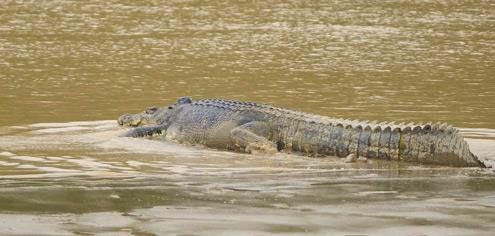
Luke Evans is studying crocodiles at Danau Girang Field Centre in Sabah and, to gather data for his research, has been learning to fly a conservation drone (a remote controlled plane) which has a digital camera attached to take photos of the landscape below.

Crocodile nests are often found in open areas as sunlight can help to regulate the internal nest temperature. This means that droning is the perfect way to find them as they can be seen easily from above!
Luke has been flying different missions in various areas of the Kinabatangan looking for evidence of crocodile nests. The first missions were a huge success and potential crocodile nests were found and investigated. This could not have been done without the help of the drone as the nests are often found in swampy areas with high vegetation, so could not be seen from ground level unless you knew where to look!
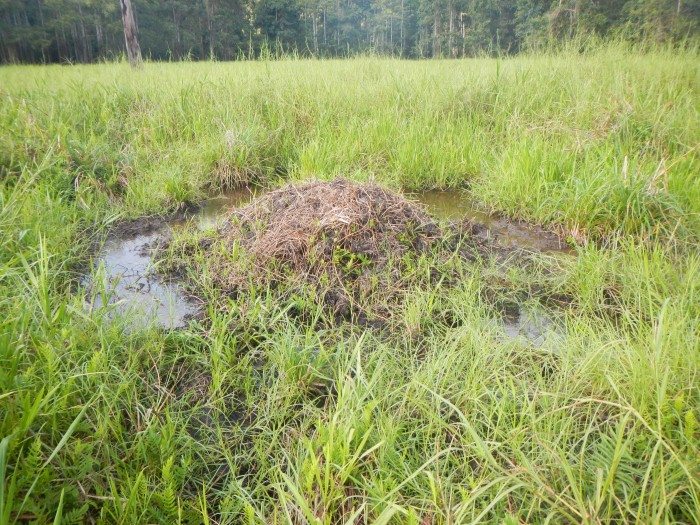
The first site that was investigated was a crocodile nest, and a video camera trap was set up near it to try and catch the mother crocodile returning. But unfortunately there were no signs of her returning.
Not only does the drone help us find crocodile nests, the pictures can also be stitched together and create an up-to-date image of the landscape below, allowing views of the areas along the Kinabatangan river which can be used for multiple conservation projects. Luke’s research aims to find out how the changing landscape, as a result of the increase in palm oil plantations, in this region is impacting the nesting behaviours of the saltwater crocodile.
The results from the research Luke and the team carried out have recently been published, which can be found here.
The drones the team used improved on previous research techniques and enabled them to pin-point and map crocodile nesting sites. This mapping can help to prevent human-wildlife conflict with the crocodiles in areas where their habitat has become increasingly fragmented by oil palm plantations and their nests are close to local villages.
Luke’s research also discovered that the female saltwater crocodiles don’t seem to re-use their nest from one year to the next, suggesting that they either don’t nest on an annual basis or actually search for new sites each year – or both could be true, every time a female nests she chooses a new site.
Photo credit: Sabah Wildlife Department / Danau Girang Field Centre
Last year we joined forces with The Vincent Wildlife Trust on their Pine Marten Recovery Project. So far, the project has gone from strength to strength with the most recent news from the project being the arrival of kitsto some of the females that had been translocated.
These little snippets of information give us a rough idea of what the pine martens have been getting up to in their first year after arriving in Wales.
One marten in particular seemed to be easier to follow than the rest, mainly owing to her prominent personality. The Vincent Wildlife Trust named her Miss Piggy and we will be bringing you exclusive updates about Miss Piggy from the field. Josie Bridges, Pine Marten Project Field Assistant for The Vincent Wildlife Trust, tells us more about what Miss Piggy’s life in Wales has looked like so far:
“Miss Piggy (PM07) arrived in Wales in October 2015, along with another female and a male. All three were driven from Scotland overnight and it is from this journey that PM07 received her very fitting name. The van transporting the martens regularly stops to offer the animals food and water, and whilst some of the animals can be very wary of people and will only eat once left alone, this was not the case with Miss Piggy!
“On arrival in Wales, Miss Piggy was released into a pen built by a team from Chester Zoo. Remote cameras in each pen monitor the behaviour of the martens to assess whether they are stressed and if they are eating regularly. Initially, most of the animals have a period where they hide in their pen’s den box, only venturing out into the pen in search of food under cover of darkness. Miss Piggy had no such reservations and was out and about in her pen within a few hours hunting out any available food.
“After about six days, the doors to the pens are opened to allow the martens to roam free. The pens are left in situ to allow the animals to return after release for supplementary feeding and a safe shelter while they establish a territory. For some time Miss Piggy, unlike most of the other martens, regularly returned to her pen to sleep and to hoover up any food left by project staff – her antics frequently captured on camera. She became well known for the ‘reverse egg wiggle’, deftly rolling an egg backwards!
“All the martens were radio tracked daily to check on their whereabouts – and this has continued until this month. The animals are now being recaptured and the radio collars removed. True to form Miss Piggy was captured having eaten everything in her trap. From this point on only remote cameras and scats (droppings) will tell us of her whereabouts as she settles into life in Wales. Next year she will be old enough to have kits – we keep our fingers crossed.”
If you want more detail about how Miss Piggy’s life in Wales is going, then head over to The Vincent Wildlife Trust’s website here. Keep your eyes peeled as we follow Miss Piggy closely over the coming years and keep our fingers crossed that she joins the breeding population of pine martens in the years to come.
You can help us continue to protect the precious wildlife right here in the UK by making a donation to Act for Wildlife today. 100% of your money will go towards projects working to protect Britain’s rarest animals like the pine marten.
Chester Zoo intern, Jack Carney, travelled out to Bermuda to assist one of our conservation scholars Helena Turner with her PhD project on the Bermuda skink. Here is what Jack got up to on his trip:
“My trip to Bermuda started with some not-so-welcoming overcast weather and a taxi driver who had no idea where he was taking me. Being stranded on the mainland was not the best start to the expedition but the trip became the stuff dreams are made of.
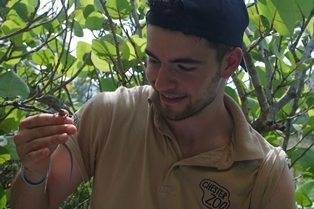
“I travelled to Bermuda as a field assistant to Helena Turner to help trap and survey skinks on the various islands comprising the small country. The objective was to determine presence and abundance of the endemic Bermuda skink as part of Helena’s PhD. Bermuda skinks are the only endemic fully terrestrial vertebrate found in Bermuda, making them a hugely important species of natural heritage. This grey/brown lizard’s populations are declining due to land use change, habitat destruction and effects of invasive species which predate upon or compete with the skink.
“The base of operations for the study is on Nonsuch Island in the North East. In recent times, it has been transformed into a ‘Living Museum’, giving protection to skinks and other endemic species such as the Bermuda petrel (or Cahow). Nonsuch provided living quarters and also the first opportunity to see a group of wild skinks, known as the ‘porch skinks’, that occasionally appeared to eat the scraps of cheese we left them.
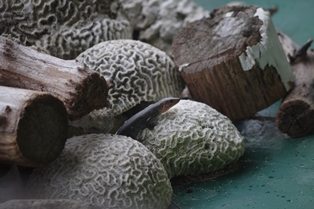
“From Nonsuch, we set out to Southampton Island, which holds possibly the greatest wild population of skinks.
“We had to travel between islands on a small paddling boat with a small motor and docking was difficult as most islands had neither proper docks nor beaches. The first task upon reaching an island is finding or creating a sheltered spot to leave equipment in and carry out measurements of the skinks away from direct sun.
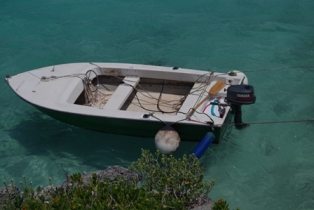
Our boat
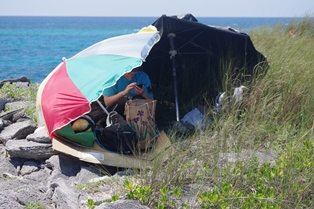
Makeshift shelter from the sun
“The traps were either glass jars or inverted plastic bottles filled with wire balls containing cheese or fish, and fish oil. Oil is rubbed around the openings to deter ants and enhance the smell for the skinks. Traps are placed at an angle and covered in foliage to prevent the skinks overheating, and they are checked every hour.
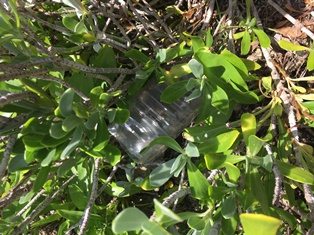
Bottle trap
“The excitement starts when a skink is caught; it is taken to the base area in a breathable bag where measurements are taken (e.g. weight, limb lengths). The skink is sexed (if possible) and photographed before being tagged with a microchip in its flank. Faecal/ mouth swab samples are also taken if possible for later testing. Finally, the skink is released where it was captured.
“The best part of being a field assistant in a small party (two or three) was being able to do a lot of the skink handling and measuring myself.
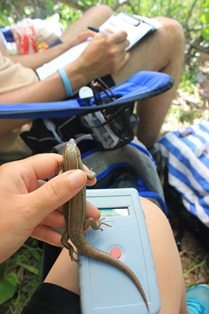
“The main problem with surveying skinks is the variable weather. Usually Bermuda is hot and sunny providing lots of opportunities for skinks to forage and bask, but when it’s rainy and dark, it is both difficult to find skinks and to be able to travel out on the boat on stormy waters. On occasion, we managed to get lifts from a safer, larger boat (and once, from a large police speedboat).
When we couldn’t survey skinks, we found other ventures to keep us busy. As well as sunbathing, snorkelling and photographing the beautiful wildlife on Nonsuch (not to rub it in), we spent time observing many of the other species on the island.
“Part of the job seemed to be informing the public about our work and why it is important. Many people we encountered were Bermudans and often had a rough idea of what skinks are and why conservation is necessary which was great to see. Others, including tourists, were unaware of the issues.
“It wasn’t until the second week that I managed to see my first good haul of skinks. The weather was perfect (for skinks at least, we were knackered after setting up the traps) and as the day heated up, more and more rustles of leaves could be heard; a good sign of skinks in the area. During the hottest part of the day, we were catching skinks in groups of three or four per trap. Many of the individuals were new to the study but a few specimens (including one with a bifurcated tail – a product of imperfect regeneration) had been monitored in previous years, showing that the tags were lasting and the skinks were surviving.
“It was surprising to see the range of habitats that skinks are able to survive in; some islands were barren and rocky, often lacking plants larger than weeds and some were sandy grasslands. Skinks manage to forage for insects, crab parts, and anything else that finds its way to these islands. Even more strangely, some rocks were fully submerged by hurricanes but somehow skinks were found shortly afterwards.
“The days that heralded no skinks were disappointing, not just because I enjoyed the whole experience and the little skinks’ faces, but also because it highlights the rarity of this species, even on the islands they are endemic to. Perfect weather and perfect habitat were not always enough for us to see any skinks, just highlighting how rare they are.
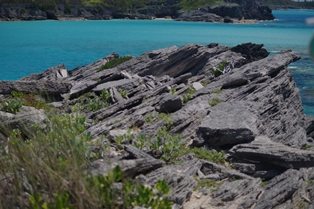
“There is hope for the species however; the Department of Environment and Natural Resources is constantly removing invasive species and has introduced measures to prevent untouched islands from receiving these pests. As Helena’s work continues, the number of locals learning about the skink and its problems is increasing. It is still in the hands of Bermudans to save the skink and I believe, with the guidance of governmental departments, they will succeed in doing so for the foreseeable future.
“My time in Bermuda opened my eyes to the struggles of conservationists as they attempt to preserve and protect, yet this has only emboldened my desire to follow in their footsteps.”
Arnaud Desbiez gives us an update on what’s been happening at the other field site in the Cerrado:
“In contrast to the Pantanal update, the Cerrado giant armadillo work has been progressing, well. As the Cerrado site is more elevated than the Pantanal, water runs off into streams so the rain here was not as much of an issue. However, the truck did get stuck a few times and some areas were inaccessible.
“The main goal of the work in the Cerrado is to map the distribution of the last populations/individuals of giant armadillos in the Cerrado of Mato Grosso do Sul. To do this we have randomly sampled municipalities in which 15-20 watersheds with varying amounts of native vegetation are investigated for signs of giant armadillos. We also conduct interviews and have a Citizen Science program where people are invited to contribute any information on sightings of giant armadillos.
“The first expedition this year covered the municipality of Banderantes – giant armadillo evidence was located in some of the areas sampled. In this particular area giant armadillos were only present in lowlands while the higher areas where the soil is more compact and rocky they were not found. The population in this area was mostly composed of ranches.
“A second expedition covered the Bela Vista municipality. This area has become increasingly converted into large cash crop plantations mainly sugar cane, soy and corn. No giant armadillos were located and no calls were received from the Citizen Science posters. Fewer people in this area knew the giant armadillo existed although some of the more elderly people interviewed seem to remember this animal had existed. A member of the team gave several talks on the local radio speaking about the species in Bela Vista.
“The third expedition headed up North to the Santa Rita municipality were eucalyptus plantations are transforming the landscape. According to the Citizen Science posters giant armadillos are present in the area and the team found giant armadillo evidence in several locations. In general people were more aware of the species in this municipality.
“The fourth expedition headed out to Corguinho and also confirmed presence and absence of the species in several localities. The fifth expedition area had lots of natural vegetation but due to the rocky nature of the soil and mountainous characteristics of the area no evidence of giant armadillo was located. Interviews confirmed giant armadillos are not present anymore although it seems that they could have been present about 30 years ago. There is actually a mountain that was named after giant armadillos as an individual was sighted there 30 years ago.
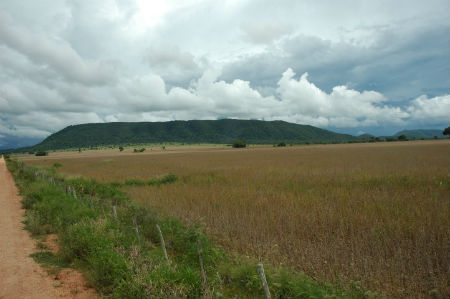
“We only returned from the sixth expedition, which was to Porto Murtinho, a few days ago. This area is very interesting as a large part of it is has a protected area for three indigenous ethic groups. Overall the area is relatively well preserved and native vegetation still covers large areas. However no giant armadillo evidence was located. We conducted over 60 interviews and no one had seen a giant armadillo in the area. However on the edge of the municipality which is closer to the Pantanal it does appear that giant armadillos were present some 30-40 years ago. In this area many people did not know of the species.
“Work in the Cerrado is fascinating as we conduct many interviews with such a range of stakeholders ranging from landless people, small farmers or indigenous communities to large owners of cattle ranches and even multinational companies. We navigate between so many different worlds and realities. What is heart-breaking however, is that we really experience habitat loss and destruction first hand. Large areas have been and are being converted to cash crops or pasture. The landscapes are changing at such a rapid rate. The older generation is very much aware of all that is being lost and share many stories of how strikingly different things were just 30-40 years ago. I cannot help but think that there will be very little for my kids to see. I almost feel like pulling them out of school so they can experience all the sights and scenes we are still privileged to witness. This last expedition in the Cerrado really made me think of our diversity of perceptions and perspectives.
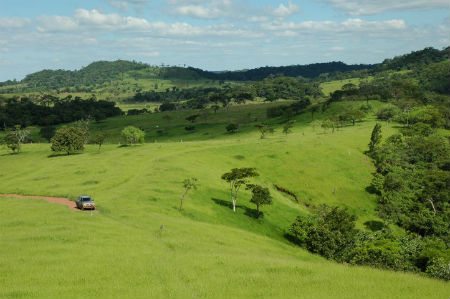
“Have you heard of the term shifting baselines? Or the one I prefer: generational amnesia? Both terms refer to a shift over time in the expectation of what a healthy ecosystem baseline looks like. There is a loss of perception of change that occurs when each generationredefines what is “natural”. In the interviews this becomes so real and each generation has their own baseline to what Nature should look like forgetting what the previous one experienced. What will be left for my children, what will their baseline be?
“I suppose the most striking example of change comes from the interviews in the indigenous communities. Elders shared stories from their childhood where their parents would travel to the Pantanal on hunting expeditions bringing back marsh deer meat and rhea eggs (as well as the odd giant armadillo). Their stories were enchanting although their lives so challenging. One man’s father lived off trading animal pelts. Today things could not be more different. The young generation is totally disconnected from the natural world. Instead of asking us questions about giant armadillos and our work they were eager to learn about the project through our facebook page and website.
“Another thought that ran through my head as we interviewed people in the Cerrado is how giant armadillos could so easily become a mythical creature from the past. In one of the areas the team and I had covered, almost no one had ever seen a giant armadillo. However it was wonderful to see that many had heard of the species through the media interviews and TV programs we participated in. It was nice to see that our outreach work is effective. However in their minds giant armadillos were even more giant! People waved their arms to say they made huge holes and then exaggerated their size to that of a horse. You can easily imagine this species becoming a legend rather than an animal we still have and desperately need to safeguard.
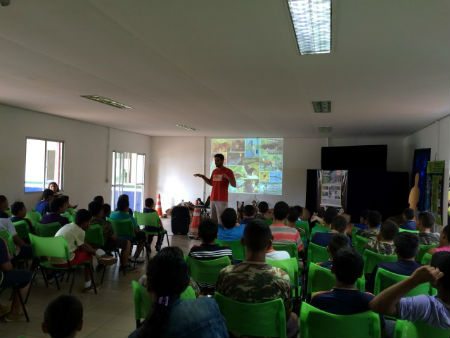
“Finally there are always many funny stories to be shared from the interviews. There is one that happened in the northern part of the state where giant armadillos can still be found. Even when present the species is incredibly rare. Two ranch workers saw a giant armadillo and were shocked when they saw it and thought no one would believe them when they told them what they had seen. So the guys decided to catch it and bring it back to the ranch. Both men struggled with the animal and put in the trunk of their car !!! Now if you have been following my updates you can easily guess what happened. Think of Houdini or Zezinho and what they did to the holding crate. That’s right in a matter of seconds the giant armadillo destroyed the trunk an appeared in the back seat of the car where it was immediately released. The whole back of the car was destroyed. No one needed to exaggerate in that story as I could easily imagine the damage done!
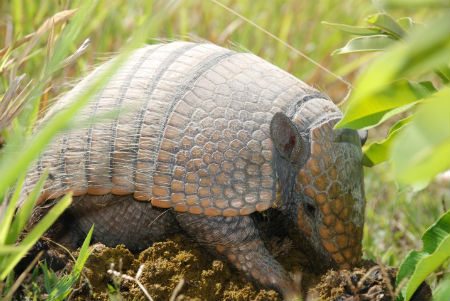
“Overall attitudes towards giant armadillos are one of amazement and wonder. People are sensitive to the fact that this is an incredible animal. So many people stated they wished they could see one. Looking at people’s faces when we show them a video of a giant armadillo really confirms that this species is an exceptional and perfect candidate as an ambassador for biodiversity conservation.”
Catch up on the armadillo story so far by reading the previous updates we’ve received from Arnaud and his team, here.
We have received another update from our field partners at the Giant Armadillo Conservation project in Brazil. The project is working in two sites: the Pantanal and Cerrado. Arnaud Desbiez, founder and project coordinator, has sent us an update from each of the field sites. This first update is from the Pantanal, where things are looking just a touch soggy…
“In the Pantanal we have a long term study on the ecology, epidemiology, genetics of giant armadillos while in the Cerrado we are mapping the distribution of the species.
Pantanal
“In January our team set out to the Pantanal to check on our monitored giant armadillos and giant anteaters at the Baia das Pedras Ranch. It had not rained for a couple of weeks and they easily reached the ranch, however, once they got there it started raining non-stop.
“This made work difficult as our equipment is sensitive to humidity; the GPS receiver will be ruined if it gets wet, it becomes difficult to check cameras and everything is slowed down.
“They managed to check on the animals and get the relevant data but there were times they simply had to wait for the rain to stop. It never did! Luckily I was still able to maintain communication with them. I contacted ranches in the area to see if we could hire a tractor to guide them out of the ranch as the Pantanal was becoming alarmingly flooded. Unfortunately, no tractor was available and no one was coming in or out of the area. Worst of all, I learned that one of the wooden bridges we rely on to get out of the Pantanal got washed out and could take several days or weeks to repair. I therefore had to hire a small plane to fly out and rescue the team while leaving our truck at the ranch. Thanks goodness we have contingency funds in our budget!
“It continued to rain for several days after they left the ranch so it was such a relief to have everyone back safe and sound.
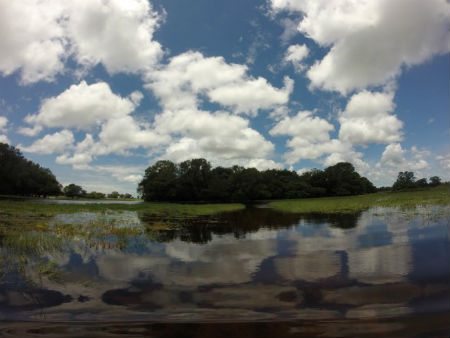
“Towards February we urgently needed to return to the ranch as the GPS units fixed on the giant armadillos were about to drop off the animals and run out of battery, making them impossible to locate. We had to rent a truck with a driver to take a couple of members of the team to the ranch since the truck was stranded there.
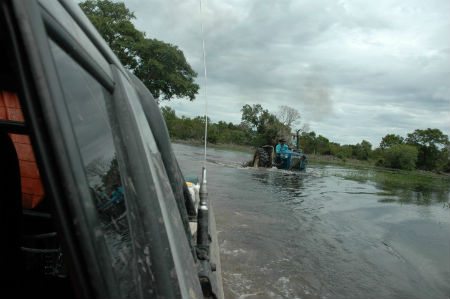
“Work was challenging to say the least. Our study area is divided in half by a flood plain which had overflowed making it impossible to cross by truck. This meant they had to swim across it and do all the work on foot or with a quad bike which they managed to float across.
“Water levels were at a record high and only the forested areas remained relatively dry. Murundum islands which are small elevations characterized by a central termite mound and Cerrado type vegetation were all flooded. These areas are actually the giant armadillo’s favourite type of habitat. All the monitored animals were now using only the thin dry forest strips as all the burrows in other areas were flooded. Two out of three GPS units were retrieved. However the GPS unit belonging to Houdini was silent.
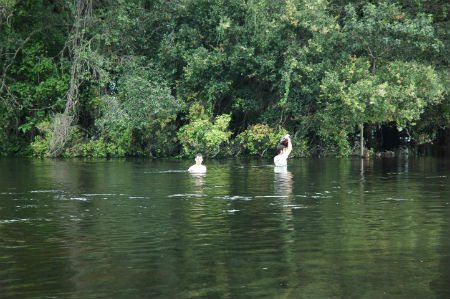
“Gabriel searched and searched for several days. He went to all the last burrows Houdini had used and most of them were flooded. We believe that the GPS unit fell off in one of these burrows and stopped working when it remained submerged for several days. What a huge loss of data. If you consider the expense of the GPS, time and effort it is to catch him (we had not caught him in over a year), the loss of this precious data is a real blow to our efforts. We were all crushed.
“Due to the floods we plan to return to the Pantanal later in the year – as I write this report the flood plain continues to be impossible to cross and I worry that we may still not be able to access this part of our study area.”
Keep an eye on the blog tomorrow for another update from the Giant Armadillo Project team, telling us more about their plans for the future.
Maria Joana Ferreira da Silva is the coordinator of a team of researchers in Portugal. Last year she was awarded a grant from Chester Zoo to support her work in protecting the endangered Guinea-Bissau Western chimpanzee. Below, she tells us more:
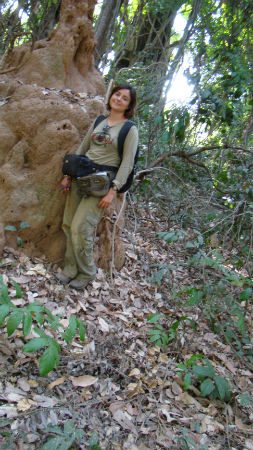
“Our team is investigating primate species in Guinea-Bissau to promote science-based conservation. Our ultimate goal is to protect the endangered Guinea-Bissau western chimpanzee, and other primate species at a landscape-scale in the long-term.
“Our main objectives are 1) to identify and select critical areas for primate conservation using a research-based system and 2) to engage local communities, national governmental agencies and local stakeholders in the protection of primates in Guinea-Bissau.
“To achieve our objectives, we will assess the current distribution and evaluate the conservation status of primate species in Guinea-Bissau and evaluate the intensity of deforestation and hunting in locations where primate populations remain. This will allow the developing of a landscape-level community-based conservation strategy.
“The endangered western chimpanzee (Pan troglodytes verus) is one of the more emblematic out of the ten species of primates found in Guinea-Bissau. Once erroneously declared extinct in the country, chimpanzees were re-discovered in the 90s and are currently heavily protected by local communities, national and international NGOs.
“They represent a major attraction for international ecotourism and are of particular importance for scientific research. The range of this sub-species extends further north and west than any other sub-species and so is considered key for the global conservation of the western chimpanzee. Additionally, chimpanzees in Cantanhez Forest National Park, the southernmost national park in Guinea-Bissau show a preference for constructing nests in palm trees. This is a particularity not seen in any other studied population in the world making these Guinea-Bissau chimpanzees unique.
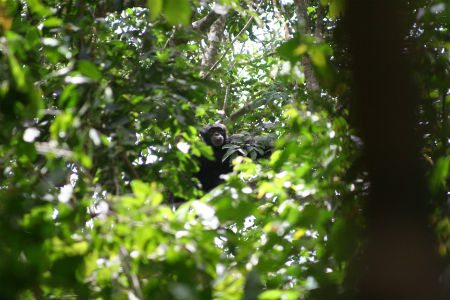
“The western chimpanzees, as well as other primate species, are all under threat in Guinea-Bissau due to uncontrolled logging and hunting.
“Over the last five years, foreign logging and mining companies have deforested large areas of original habitat within the country at an alarming rate. At the beginning of 2014, deforestation went out of control. Over 100 container trucks en-route to China and filled with illegally logged timber from endangered tropical forest species were observed on a weekly basis near the capital international port.
“Deforestation has been responsible for the extinction of some populations already and most primates groups are likely to be confined to pockets of original habitat surrounded by areas profoundly altered by human activities. At least 1,500 primate carcasses are traded every dry season at the bush-meat markets in the capital city. The pet-trade is very profitable: an infant chimpanzee can reach £28-34 where most locals live with less than £2 a day.
“One day, I received a call from a villager who claimed to have seen a large group of baboons near his village. When I arrived, he showed me a baby male baboon, not older than two years old, tied up a tree. The baby baboon was terrified and shaking. When I lip-smacked (the baboon language for hello, I am your friend), he held up his arms, asking to be held.
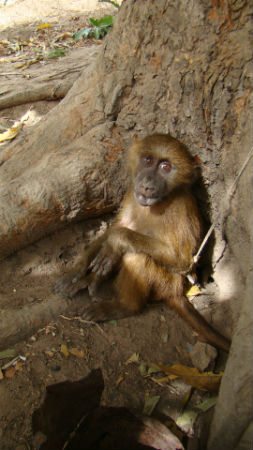
“Around me, the children of the village were shouting that they had eaten the baboon’s mother the previous night. I immediately asked for water and food and tried to explain how the baboon’s living conditions could be improved. Despite my efforts, in the end of my explanations I could not remove the baby baboon from the village and I had to leave him there.
“There are no rescue centres for captive primates in the country and national governmental organizations have no financial and logistic means to transport primates to rescue centres in neighbouring countries. Communities are not informed of how unique these primate species are worldwide, what the dangers of eating primate meat are, what the impact of their hunting practices can be and that baby primates can never be good pets.
“Despite this conservation emergency, governmental agencies and national primate conservation NGOs are incapable of implementing concerted actions at a regional-level scale. Not only baseline information on the location of the last remaining populations is missing but also the regional conservation status is out-dated for most species. To implement effective conservation measures, a scientific-based method to define and prioritize the most important areas for primate conservation is needed.
“Chester Zoo’s support was essential to effectively launch our initiative and start the first phase of the project: a survey of primate groups in southern Guinea-Bissau. With the support of Chester Zoo, we were able to attract funding from other organizations promoting primate conservation in West Africa. Together, we can assure a future for the valuable and threatened primates of Guinea-Bissau.
“Fieldwork days in Guinea-Bissau can start well and become very dramatic without warning. When I returned home after the first stage of my fieldwork, I could not stop thinking about what I could do to help primate conservation in the country.”
Following on from last month’s blog update from our project partners the Lowland Tapir Conservation Initiative in Brazil, we have another update from the field to share with you. But, on top of that, the team are also celebrating 20 years of tapir conservation; which is such an amazing achievement!
Patricia Medici, project coordinator, tells us more:
“This year we are very excited to be celebrating 20 years of conservation efforts in Brazil! Yes, we started in the Atlantic Forest (Morro do Diabo State Park) two decades ago! We are planning several celebratory activities to be carried out throughout the year and we will definitely keep you posted about everything we get up to. We will use this opportunity as a catalyst for communication and outreach initiatives and we will work with the Brazilian media quite heavily too.”
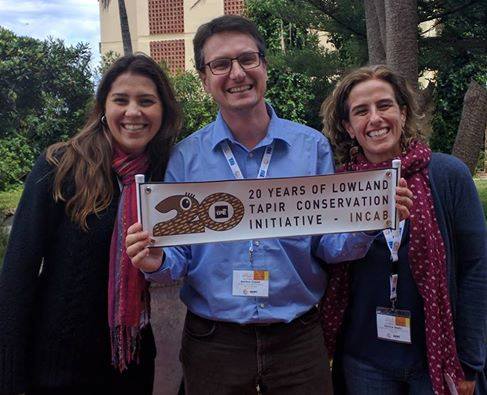
From all of us at Chester Zoo, a BIG congratulations to Pati and the rest of our colleagues at the Lowland Tapir Conservation Initiative for their incredible and inspiring efforts for Brazilian lowland tapir conservation.
Their actions contribute towards the scientific work we do here at the zoo on tapir wellbeing – providing a habitat that is as close to their natural environment as possible – and their research also gives us a better insight into the reproductive behaviour and family dynamics of the species, all very important information for species husbandry practices.
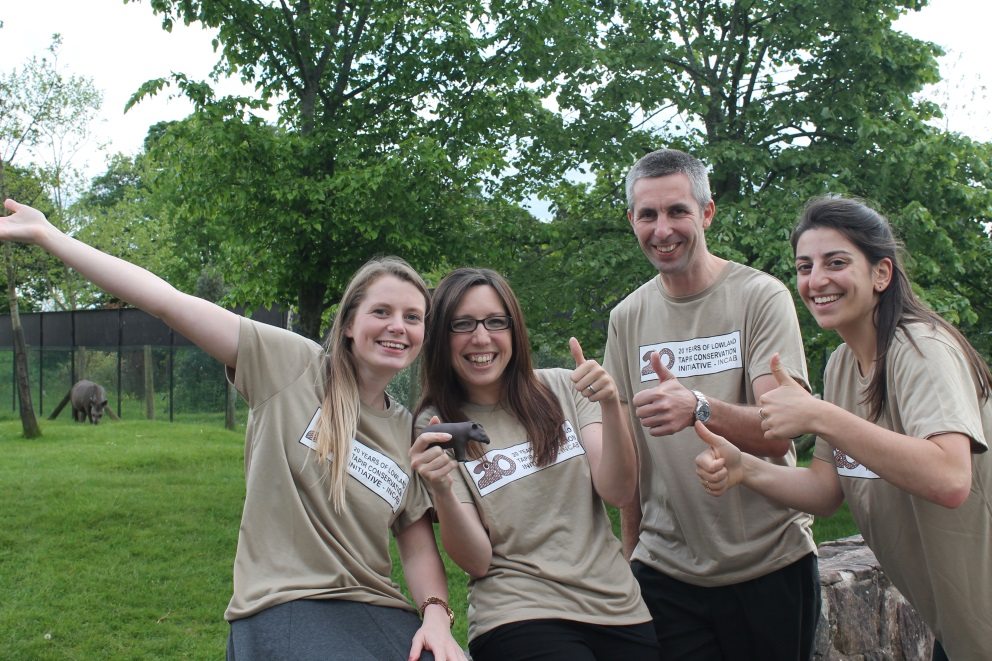
Continuing with Patricia’s update:
“The Pantanal – we will have our first capture expedition at Baía das Pedras later this month and we are looking forward to that. Last February, our team retrieved three GPS collars that fell off from our Pantanal tapirs: Mucci, Wie and Moreninho. We were able to successfully download the data from their collars. Moreninho is the son of Morena and Vivek, a mating pair we monitored through telemetry before (and continue to be monitored through camera-trap photos), so we are now able to put their spatial ecology data together to analyze how these ‘family units’ organize themselves in space!
“It was VERY interesting to look at the maps and as it turns out, Moreninho’s home range seems to be a lot more associated with his father’s home range…which I did not expect. Camera-trap photos have shown that Justine and Felippe had another baby! TED tapir has a sibling! We actually have a crazy set of camera-trap photos showing the four of them together…


How many tapir can you see? Photo credit: Lowland Tapir Conservation Initiative
“On a different note, I would like to mention that all the data and results from the Lowland Tapir Conservation Initiative (Atlantic Forest, Pantanal and preliminary data from the Cerrado) have been made available for the Second Edition of the Brazilian Red List of Threatened Species, in partnership with Instituto Chico Mendes de Conservação da Biodiversidade (ICMBIO) – a Brazilian Environmental Agency.
“I overviewed the first national red list assessment in 2011 and will do the same for the second edition, starting this year. This is a fantastic way to apply our data for tapir conservation in Brazil.
“I would also like to share the most fantastic news: my TED Talk, published on TED.com in November 2015, has since then had over 1 million views (almost 1,150,000 right now!) and has been translated into 26 different languages, providing INSANE exposure to the tapir conservation cause worldwide! If you have not had the chance to watch it, check it out here.”
We can’t wait to hear about more successes from the tapir team. If you want to catch up on the tapir conservation project, you can find more blog updates from the project here.
In our previous update from our project partners, The Vincent Wildlife Trust, back in September 2015, we told you about the translocation of native pine martens from Scotland to Wales as part of Britain’s first carnivore recovery scheme.
It’s official, following the move pine marten kits have been born in Wales! And we’re extremely happy to hear this news; these births are a significant moment in the conservation of pine martens as this native mammal carries the title of Britain’s second rarest carnivore, after the wildcat.
At least three of the ten female pine martens brought to Wales from Scotland last autumn by The Vincent Wildlife Trust have given birth. Staff from the Trust’s ‘Pine Marten Recovery Project’ placed remote cameras at a number of sites where they believed female martens were preparing to have young.
Further investigation has confirmed a total of at least five kits! Natile Buttriss, CEO of The Vincent Wildlife Trust, said:
“I am absolutely delighted. We have been waiting with bated breath for months to see if breeding would be successful.”
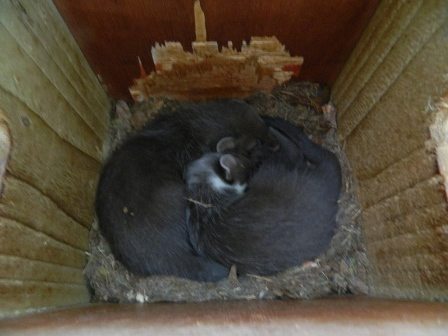
The Pine Marten Recovery Project aims to restore a viable pine marten population to Wales and England. We are one of the project’s major partners, as well as the People’s Trust for Endangered Species (PTES) and Woodland Trust, with support from Wildlife Vets International and Exeter University.
This is such amazing news, and makes all the hard work by the Vincent Wildlife Trust team and partners worthwhile.
Mike Townsend of the Woodland Trust added:
“Pine martens are not just an iconic woodland species, but also a key missing element in the woodland ecosystem. This recovery project demonstrates the importance of ensuring connectivity of good wildlife habitats across wide areas, so this beautiful and rare creature can thrive and hopefully spread more widely across the country.”
In September twenty pine martens were taken from Forestry Commission Scotland land under licence from Scottish Natural Heritage and relocated to Wales where they were on the verge of extinction. The animals were released in woodland owned by Natural Resources Wales.
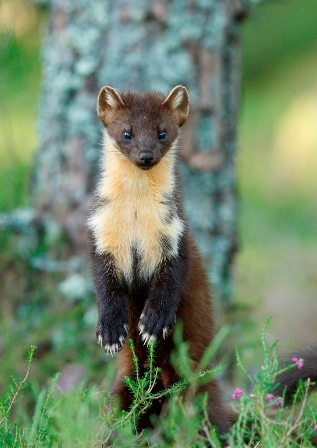
This is a pilot project and the animals have been radio tracked daily by staff and local volunteers to monitor their movements and behaviour patterns. When some of the females’ behaviour began to change it was a sign that a birth might be imminent.
A further twenty pine martens will be translocated from Scotland in the autumn and this should result in a self-sustaining population that over time will spread to other forests of Wales and across the border into England. Without this helping hand, it is likely that this native mammal would simply disappear from the Welsh landscape.
You can support the conservation work we do right here in the UK by making a donation to our UK Wildlife programme, here. Thanks to your support we’re able to continue working with projects like The Vincent Wildlife Trust and protect the precious wildlife found right on our doorstep before we lose them forever.
